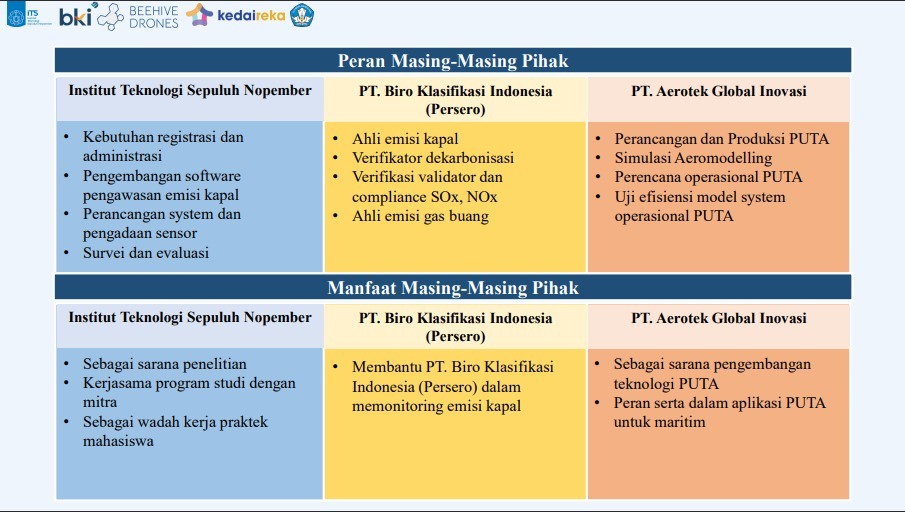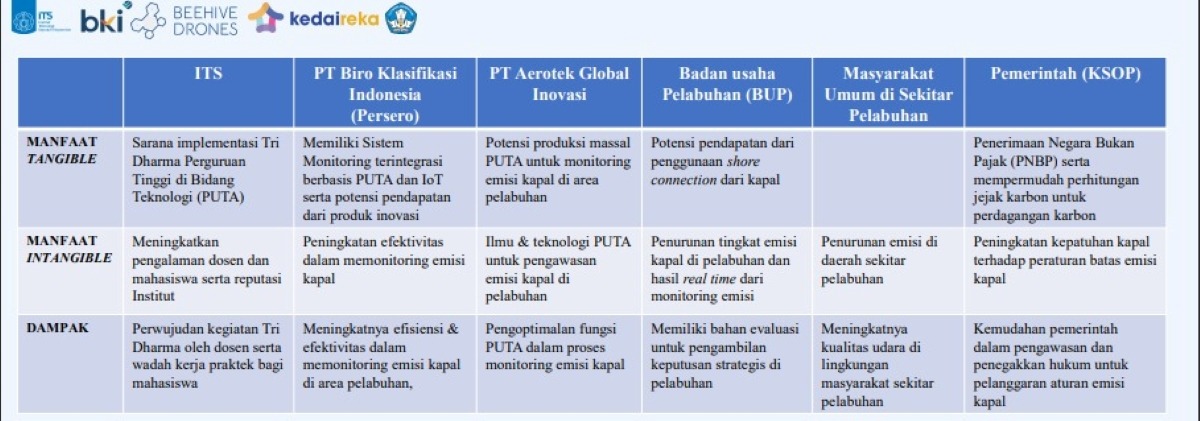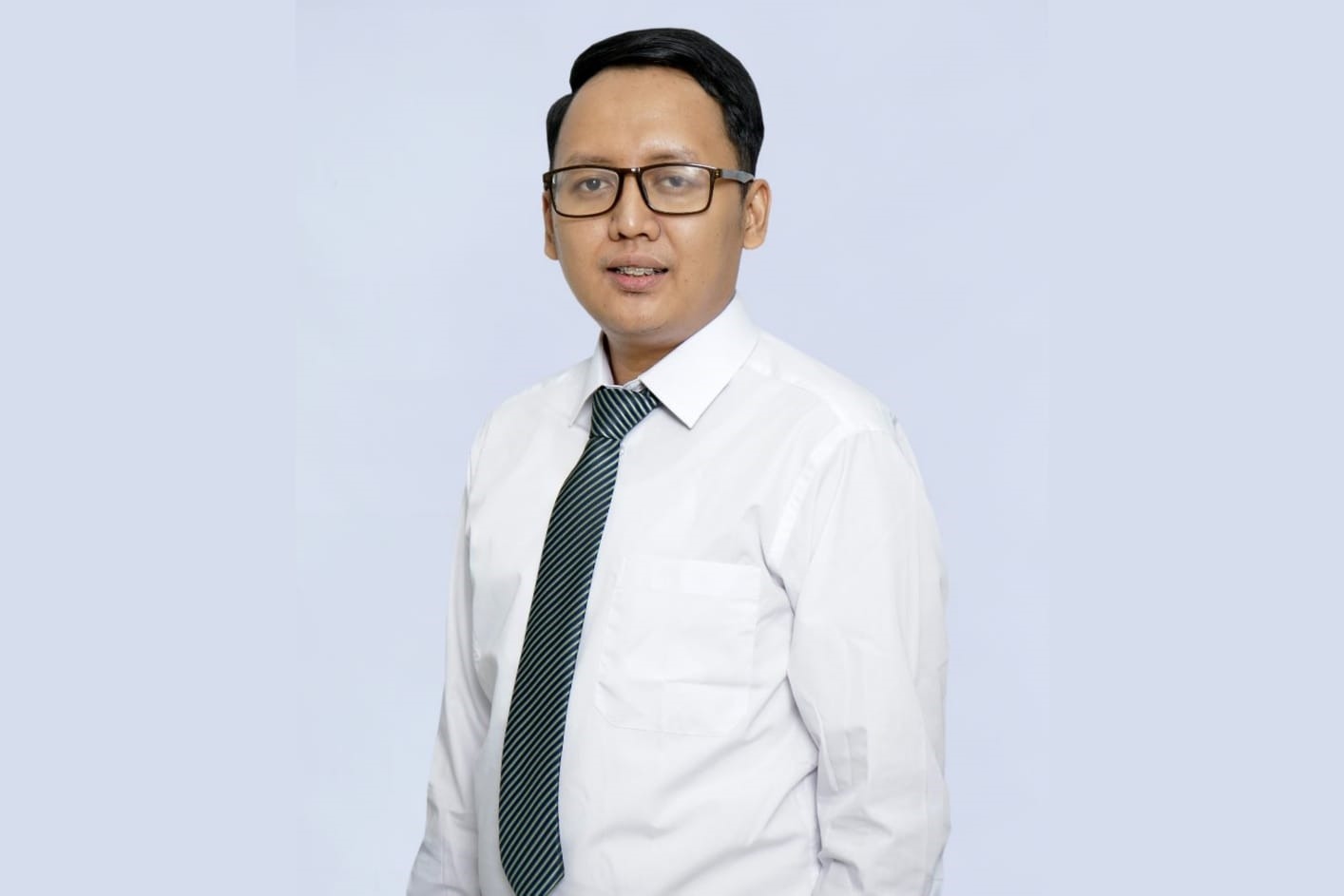ITS Initiated PUTA and IoT-Based Vessel Emission Monitoring Devices

The ITS lecturer team is initiating The architectural scheme of the work system innovation of Ship Emission Monitoring Devices in Port Areas Based on Unmanned Aircraft (PUTA) and the Internet of Things (IoT)
ITS Campus, ITS News – Air pollution does not necessarily come from exhaust emissions from motorized vehicles or industrial factories; exhaust emissions from ships are also included. Therefore, to support the Net Zero Emission (NZE) 2050 program, a team of lecturers from Institut Teknologi Sepuluh Nopember (ITS) initiated a ship emission monitoring device in the port area based on Unmanned Aircraft (PUTA) and the Internet of Things (IoT).
A member of the lecturer team, Muhammad Riduwan SKom MKom, said this idea was motivated by problems related to the dense shipping activities in Indonesia, which caused high ship exhaust emissions. In line with that, International Maritime Organization (IMO) regulations stipulate the maximum emissions per ship. “These emissions include SOx, NOx, COx, and Particulate Matter (PM)” he said.

Explanation of the roles and benefits provided by ITS and PT Bureau of Classification of Indonesia, as well as PT Aerotek Global Inovasi as partners for innovations developed by the ITS lecturer team
Furthermore, the man familiarly called Riduwan said that currently, Indonesia does not have a system and equipment that can monitor ship exhaust emissions in the air. Therefore, the idea of a ship emission monitoring device based on PUTA and IoT was born to answer this problem. “The collaboration between PUTA and IoT makes this idea an effective and efficient solution,” he added.
He explained that the intended effectiveness and efficiency are because PUTA can be controlled through a remote control system from a smartphone or computer, so only a software system is needed to monitor ship emissions in the port area. “With PUTA, a control system is realized through a controlling website which will provide real-time data on emissions produced by ships,” he explained.

Further explanation regarding the benefits that can be provided directly and indirectly and the impact from ITS and related parties for innovations initiated by ITS
This system works because PUTA is flown in the port area, and four sensors are installed to detect each emission, both SOx, NOx, COx, and PM. Then, gas monitoring detected by PUTA can be seen in real-time through the website developed by the ITS lecturer team. “On the website, the emissions levels produced by ships will be displayed, and the quality will be monitored whether they comply with IMO regulations or not,” he explained.
Besides that, he continued, the innovation initiated by the ITS lecturer team was a collaboration of the Department of Marine Transportation Engineering ITS and the Software Engineering Study Program (RPL Study Program) from the Department of Informatics ITS. Apart from Riduwan, ITS lecturers involved in this innovation include Ir Tri Achmadi PhD, Maulana Yafie Danendra ST MLog, and Siska Arifiani SKom MKom. “We also involve ten students from the two departments concerned,” he said.

Muhammad Riduwan SKom MKom, lecturer at the Department of Marine Transportation Engineering ITS as well as a member of the initiating team for innovating ship emission monitoring devices in the PUTA and IoT-based port area
This team also works with related partners such as PT Bureau of Classification of Indonesia (BKI) and PT Aerotek Global Inovasi. The plan is that this innovation, which is still in development, will be tested for the first time at one of the ports in the Bangkalan area, Madura. “Through this innovation, it is also hoped that the intended goals can be achieved and can be utilized by the government properly as an NZE 2050 solution,” Riduwan concluded hopefully. (ITS Public Relations)
Reporter: Nabila Hisanah Yusri
Related News
-
ITS Sends Off 12 Free Mudik Vehicles Ahead of Eid Al-Fitr
The dispatch of 11 bus fleets carrying ITS students for the Free Mudik ITS 2024 ITS Campus, ITS News
July 25, 2023 19:07 -
ITS Lecturer Wins 2024 Female Science Talents Intensive Tracks from Germany
Sri Fatmawati SSi MSc PhD, a lecturer at the Department of Chemistry, ITS, has emerged as the winner of
July 25, 2023 19:07 -
ITS Shares Tips & Tricks on SNBT 2024 Socialization
(from left) Executive Secretary of SNPMB 2024, Bekti Cahyo Hidayanto SSi MKom, Head of the Admissions Subdirectorate at ITS,
July 25, 2023 19:07 -
Supporting Defense in Indonesia, ITS Professor Creates Anti-Radar Material
Professor Dr. Mashuri SSi MSi, while delivering his academic oration on anti-radar materials during the ITS Professorial Inauguration. ITS
July 25, 2023 19:07
